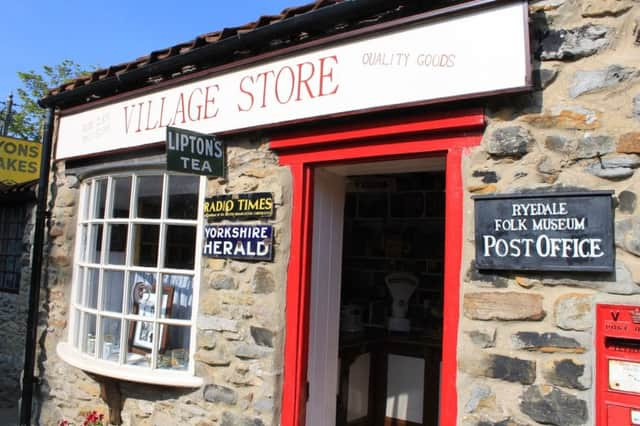Exhibit of the Week: The Rosedale Shop drawers, Ryedale Folk Museum


No-one knows why certain events were chosen to be recorded. Some record marriages, for example - “Agnes Strickland Fred Teasdale married May 8 1908 at 11 am”.
“Farndale Show August 21 1919” gets a mention, perhaps because it was the first show after the end of the First World War. More poignant are the nine records of accidents and deaths in the mines at Sheriffs Pit and East Mines which paint a grim picture of life for the workers in the iron-stone mines and railways. “John Watson killed April 8/96 East Mines”, “George Bailey leg broken New Years Eve 1895 Taken off Jany 1895”, “G Agar killed East Mines March 27 1903”.
Advertisement
Hide AdAdvertisement
Hide AdResearch into newspaper records of the time reveals further details about the events. This was a time before financial help was provided by employers or government in these circumstances and communities had to look after their own. John Watson was a young miner killed when a piece of stone weighing about a ton fell on him, leaving a widow and one child. In July 1896 a collection of £2-12s was taken among the miners working at the East mine and given to his widow. The newspaper reports that George Bailey was injured in Rosedale East mine when a piece of stone fell and broke his leg in two places. After being carried home “with great difficulty…through a blinding snowstorm”, his leg was amputated. In May 1895 a concert raised £7 for him. In January 1896, “an entertainment of a sacred nature” was given at the Ebenezer school in Rosedale East and another two guineas was raised.
It was a time when there were few safeguards for workers. George Agar was found lying between the railway lines where wagons passed each other. The jury’s verdict was that he was “accidentally killed by wagons in Rosedale East mines”. However, the coroner in his summing up remarked that it was the third inquest he had held on men killed at that particular place in the mine and said the jury ought to consider whether anything could be done to prevent similar occurrences. Perhaps this was a sign of the beginnings of health and safety awareness.
Although it is impossible to enable all our Museum visitors to see the Rosedale shop drawers, the ‘This Exploited Land of Iron’ project is now set to tell the story of the people and communities of the ironstone industry. There are many activities and events to take part in from now until 2021, where you can find out how the ironstone industry shaped the landscape and communities of the area. The project is a Landscape Partnership scheme, supported by the Heritage Lottery Fund, North York Moors National Park Authority, David Ross Foundation and other partners.
Otherwise, you can still visit the ‘1954 village shop’ daily at the Museum until 3 December.